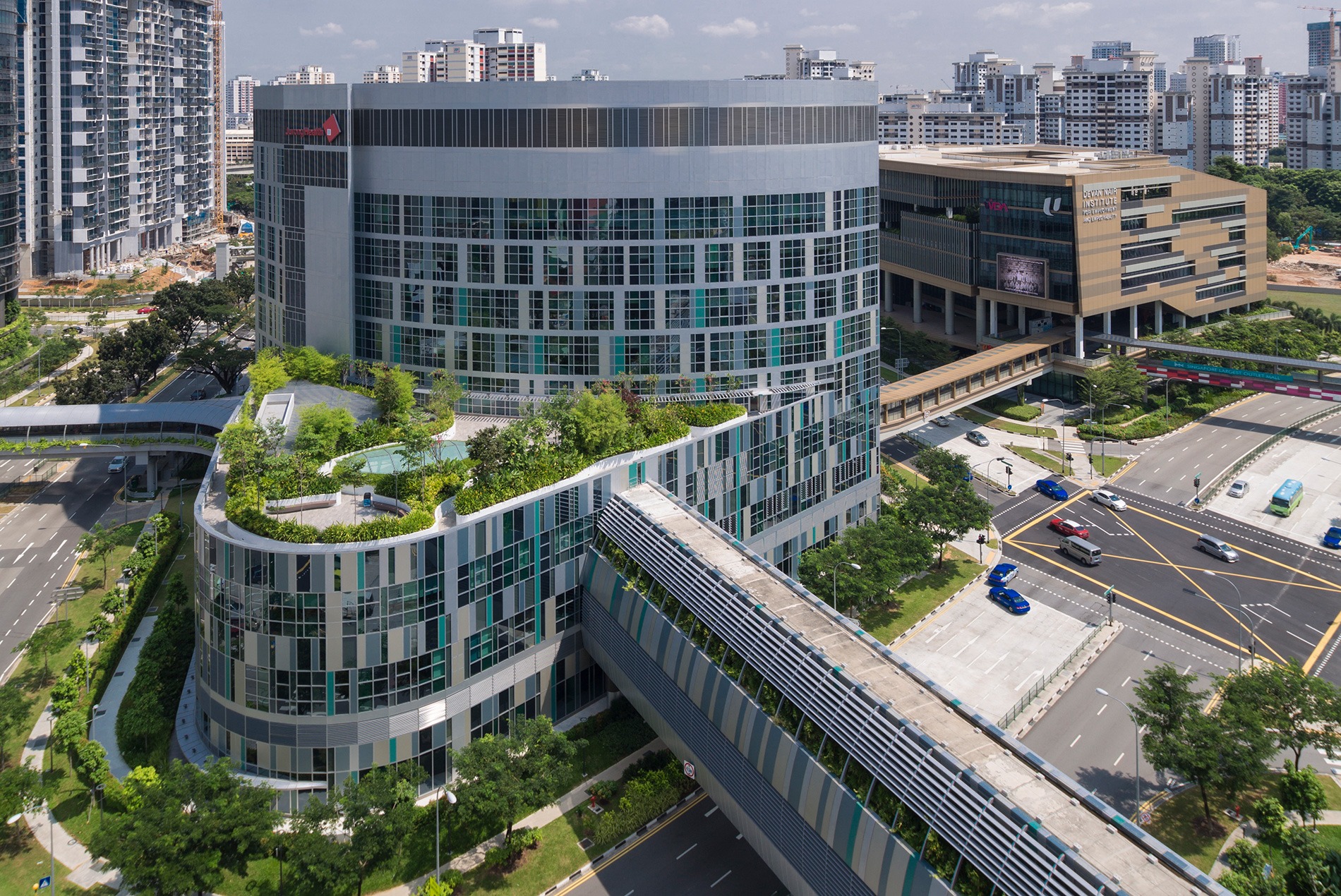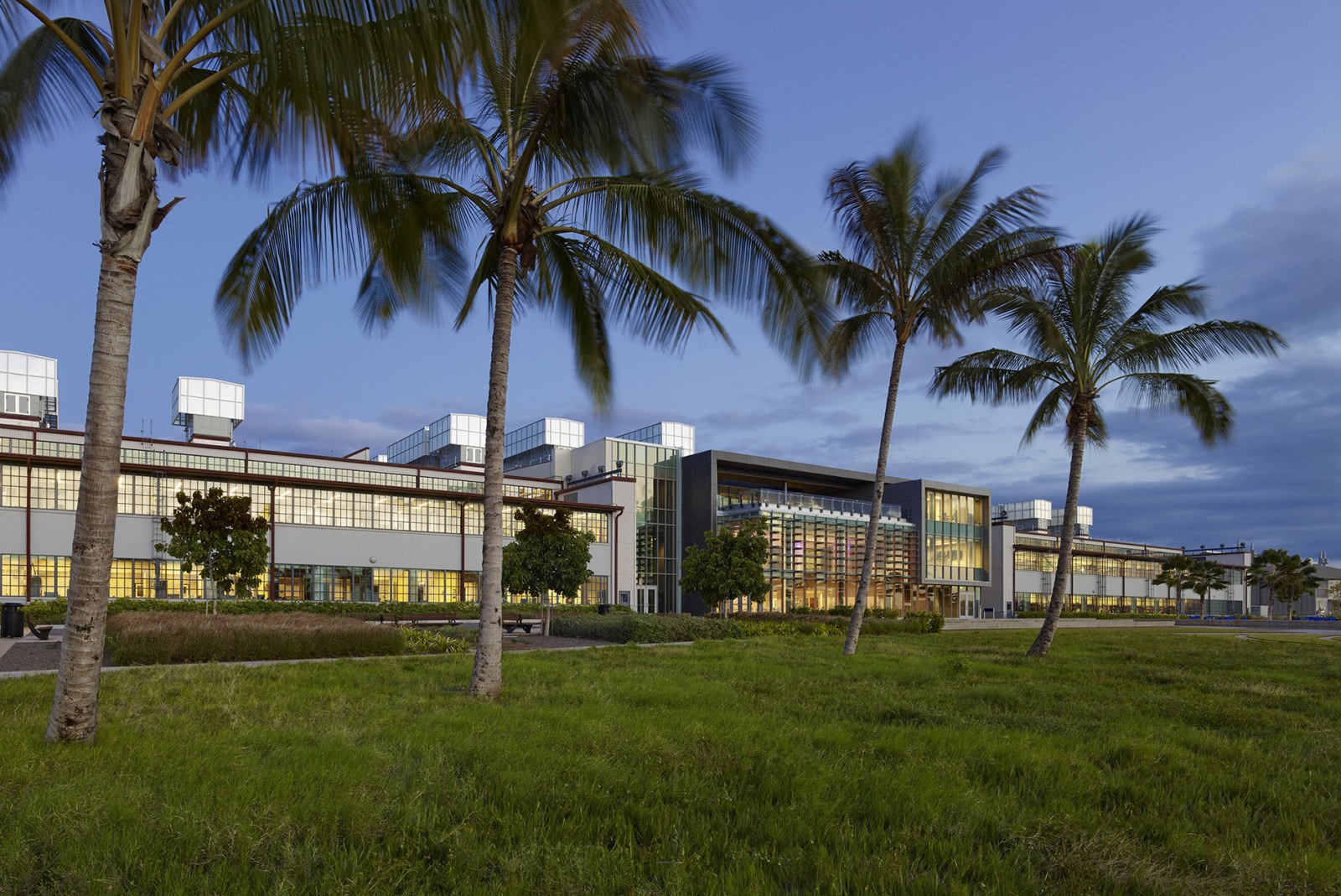The AIA Committee on the Environment (COTE) has announced its 2017 Top Ten Green Project award winners.
Two HOK-designed projects—the National Oceanic and Atmospheric Administration (NOAA) Daniel K. Inouye Regional Center in Hawaii and Ng Teng Fong General Hospital & Jurong Community Hospital in Singapore—were named winners in the industry’s best-known awards program for sustainable design excellence. This gives HOK a total of 10 AIA COTE awards, making the firm one of the most frequent winners since the program’s inception in 1997.
“We are honored that the jury selected two of our projects for setting the standard in design and sustainability,” said Anica Landreneau, Assoc. AIA, LEED AP BD+C, HOK’s director of sustainable design. “Sustainable design has been a core value of our firm since the early 1990s. Over the years, our approach to sustainability has become more scientific. Today, we are focusing on the well-being of the people who occupy the space and to the business success of our clients, and are on track to achieve a carbon-neutral design portfolio by 2030.”
Though the two AIA COTE award-winning projects are very different, each relies heavily on passive design strategies to significantly reduce energy consumption and create high-performance buildings.

Located on a national historic landmark site on Oahu’s Ford Island in Hawaii, the NOAA’s Inouye Regional Center features the adaptive reuse of two World War II-era airplane hangars linked by a new steel and glass building. The LEED Gold complex accommodates 800 people in a research and office campus that integrates NOAA’s mission of science, service and stewardship with Hawaii’s cultural traditions and ecology. Facilities include wet and dry research laboratories, a marine center, a library, administrative offices, conference and meeting areas, a dining hall and informal collaboration spaces. HOK collaborated on the design with Hawaii-based architect Ferraro Choi.
“The historic hangars and local ecology inspired beautifully simple design solutions for how the center uses air, water and light,” says Paul Woolford, design principal for HOK’s San Francisco office. “We looked to the local biological influences of the region—such as the cooling mechanism of the monkey pod tree—as a guide to designing the building systems.”
The AIA COTE jury was impressed by the project’s innovative passive downdraft system providing 100 percent fresh outside air through hybrid natural ventilation and its “excellent daylighting.” They praised how the project “rejuvenated” the site through the creation of new waterfront public spaces.

Ng Teng Fong General Hospital is part of Singapore’s first medical campus to combine continuing care from outpatient to post-acute care. Based on passive principles, the design supports resource efficiency, health and well-being. Seventy percent of the facility is naturally ventilated. The Green Mark Platinum building uses 38 percent less energy than a typical Singaporean hospital and 69 percent less than a typical U.S. hospital. As design and medical planning consultant, HOK collaborated with the Singapore Ministry of Health and a team that included CPG Corporation (prime architect and architect of record) and Studio 505 (design collaborator focusing on building envelope development).
“We envisioned the hospital as an oasis in the dense city of Singapore,” says Bill Roger, FAIA, ACHA, regional director of Healthcare based in HOK’s San Francisco studio. “The design incorporates parks, green roofs and vertical plantings throughout the campus and offers each patient an operable window with a view of the greenery. It’s unique for a healthcare facility to offer so much access to greenery and natural ventilation.”
“This project is an extraordinary model for hospitals to behave as healing environments, not seen in the United States,” stated the AIA COTE jury. “The passive strategies demonstrated here are a model for hospitals around the world.”
These are HOK’s ninth and tenth AIA COTE Top Ten project awards. On its website, the AIA notes that the awards, now in their 21st year, changed for 2017. These changes include highlighting issues including “wellness, resilience and economy” to “emphasize the importance of actual performance in addition to design intent.” Past HOK AIA COTE winners include:
- King Abdullah University of Science and Technology, Thuwal, Saudi Arabia
- San Mateo County Forensics Laboratory and Coroner’s Office, San Mateo, California, USA
- Edificio Malecon Office Tower, Buenos Aires, Argentina
- National Wildlife Federation Headquarters, Reston, Virginia, USA
- Nidus Center for Scientific Enterprise, St. Louis, Missouri, USA
- World Resources Institute Headquarters Office, Washington, DC, USA
- Missouri Historical Society Museum Expansion and Renovation, St. Louis, Missouri, USA
- SC Johnson Commercial Products Headquarters, Racine, Wisconsin, USA
The AIA named HOK a “high-performing firm” in a 2017 report describing lessons from frequent winners of the AIA COTE Top Ten Award. According to the report, these high-performance firms share traits that go beyond a commitment to sustainable architecture and ecological design. They also are leaders in areas including diversity and staff retention, and all have signed the AIA 2030 Commitment. As part of its commitment to achieve a carbon-neutral design portfolio by 2030, HOK recently announced that its target for 2017 is a 60 percent reduction in energy use intensity across its portfolio.
